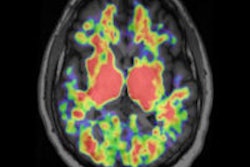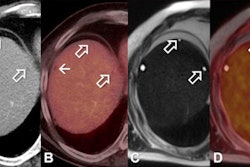Wednesday, December 4 | 10:50 a.m.-11:00 a.m. | SSK17-03 | Room S505AB
German researchers believe FDG-PET/MRI is a promising method for staging lymphoma, given that the hybrid modality's images are analogous to PET/CT without the ionizing radiation from CT.However, the group from University Hospital Carl Gustav Carus in Dresden does not recommend diffusion-weighted MRI with background suppression (DWIBS) as a part of the FDG-PET/MRI protocol for lymphoma, because it does not provide relevant additional information.
"PET/MRI allows for the combined evaluation of anatomy and tissue metabolism," lead researcher Dr. Ivan Platzek from the department of radiology told AuntMinnie.com. "Our results show that FDG-PET/MRI has high sensitivity and specificity for nodal involvement in malignant lymphoma. The results imply that PET/MRI can be an effective staging modality for lymphoma."
The retrospective study included 18 patients with malignant lymphoma who underwent PET/MRI on a whole-body hybrid system after intravenous injection of FDG. The PET/MR examination included DWIBS images of the neck, thorax, abdomen, and pelvis.
Ten patients underwent FDG-PET/MRI for initial staging, while eight patients had PET/MRI to assess their response to therapy.
Of the 468 detected lymph nodes, 90 (19%) were found to have lymphoma. No evidence of organ involvement was found.
With PET/MRI, 84 lymph nodes (18%) were rated as positive, compared with 78 lymph nodes (17%) with DWIBS. Both the sensitivity and specificity of FDG-PET/MRI were significantly better than those of DWIBS.
While FDG-PET/CT is currently the modality of choice for lymphoma imaging, FDG-PET/MRI is a "promising alternative to PET/CT because of the reduced radiation exposure," Platzek said. "This is especially relevant for patients who typically undergo several PET scans for staging and therapy response assessment, such as lymphoma patients."
Based on the promising study results, Platzek and colleagues are continuing their research to evaluate the prognostic value and cost-effectiveness of FDG-PET/MRI.
"Furthermore, FDG-PET/MRI offers an excellent opportunity to compare diffusion-weighted MRI with FDG-PET, for example, for therapy response assessment," he added.




















